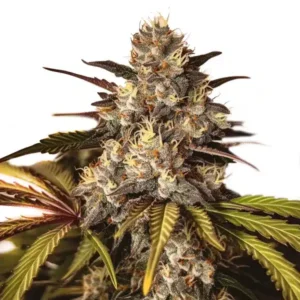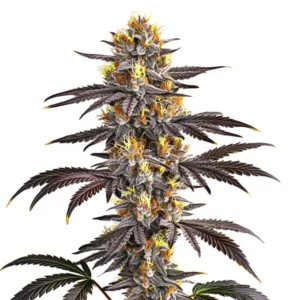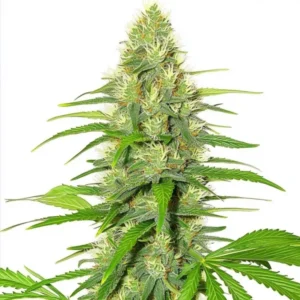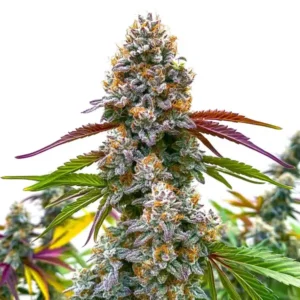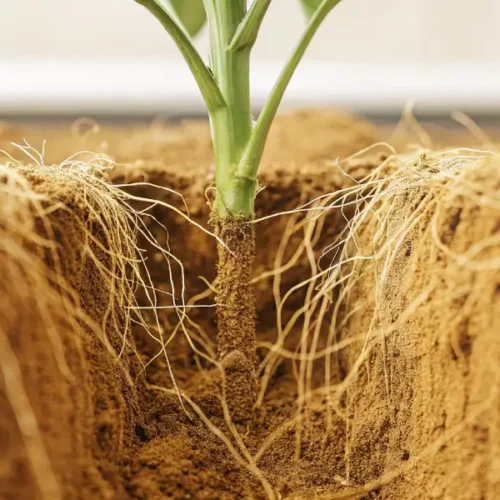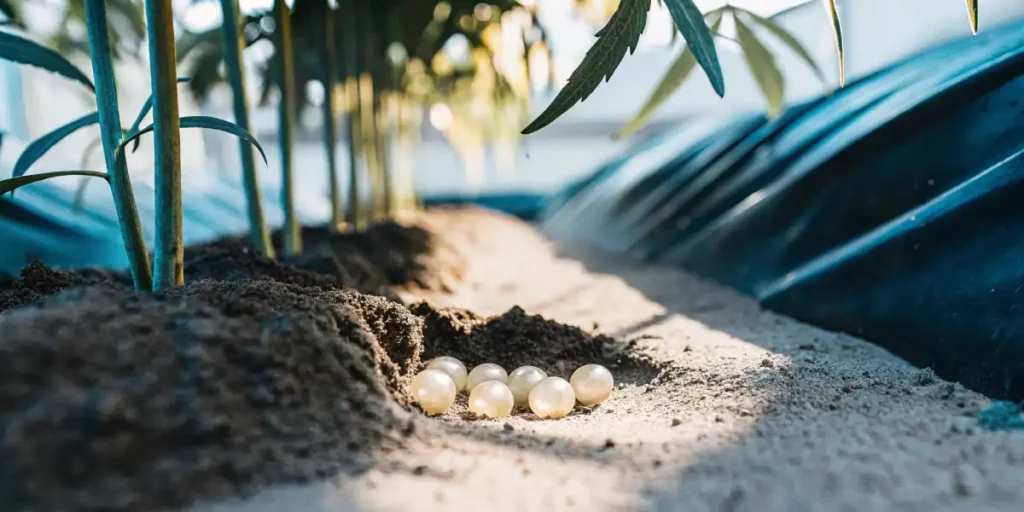
Bugs Egg on Cannabis Roots
Many cannabis growers face the unwelcome surprise of discovering bugs egg on cannabis roots. These tiny invaders can cause significant harm. They often lead to stunted growth and poor yields. Knowing how to handle them is crucial.
Root systems are the lifeline of your plant. When bug eggs settle in, they can disrupt nutrient absorption. This directly affects the health of your cannabis. Left unchecked, these pests can destroy your entire crop.
One effective strain to consider is the Critical Daddy Purple. Known for its resilience, it can withstand minor infestations. However, no strain is completely immune.
Identifying Bug Eggs on Cannabis Root Systems
Spotting bug eggs on cannabis roots requires a keen eye. These eggs often appear as small, white clusters. They might be mistaken for soil particles. A closer look usually reveals the truth.
Signs of infestation due to eggs include wilting leaves and nutrient deficiencies. If you notice these symptoms, inspect the roots carefully. Use a magnifying glass to get a better view. Early detection is vital for effective intervention.
Recognizing the presence of these pests early can save your crop from severe damage. Eggs and bugs can quickly multiply, making it essential to identify them before they hatch and wreak havoc. Regular monitoring is an important step in safeguarding your plants.s.
Along with visual inspections, consider employing tools like soil moisture meters. These can help track changes in your plant’s root health indirectly. Being proactive about identifying bug eggs on cannabis root systems can significantly improve your pest management efforts.
Signs of Infestation
Wilting is a common symptom. It indicates that the roots are struggling. Bug eggs can suffocate the roots, cutting off essential nutrients. This often leads to drooping leaves.
Another sign is yellowing leaves. This results from nutrient uptake issues. Bug eggs can block the roots’ ability to absorb nutrients. As a result, the plant’s health deteriorates.
Another indication of infestation is a noticeable slowdown in plant growth. When roots are compromised, the overall vigor of the plant diminishes. This can lead to smaller leaves and fewer buds.
Additionally, if you notice an unusual number of insects around your plants, it can be a red flag. These bugs could be attracted to the eggs or larvae developing in the roots. Being vigilant about these signs of infestation on cannabis roots due to eggs can help in early intervention.
Promos & Deals
Natural Ways to Eliminate Bug Eggs on Cannabis Roots
Going organic is a smart choice. It keeps your cannabis free from harmful chemicals. Several natural methods can help tackle bug eggs. These strategies are effective and eco-friendly.
For instance, neem oil is a popular option. It’s a natural insecticide that disrupts the life cycle of pests. Apply it directly to the roots. This can help eliminate bug eggs effectively.
Keep in mind that warm, stagnant irrigation water can worsen the issue. Hot water with low oxygen content creates ideal conditions for eggs to hatch and pests to thrive. Try to keep your irrigation water around 18ºC to discourage infestations.
Other natural ways to eliminate bug eggs include using essential oils like peppermint or rosemary. These oils can deter pests when diluted and applied to the soil. Their strong scents act as a repellent.
Biological controls, such as beneficial nematodes, can also be introduced into the soil. These microscopic organisms consume pest larvae, providing a sustainable and organic solution for bugs on cannabis roots. These methods integrate well into a holistic pest management plan.

Organic Solutions for Bugs on Cannabis Roots
Diatomaceous earth is another excellent choice. In addition to diatomaceous earth, applying a layer of mineral mulch can prevent bugs from reaching the root zone. It also helps regulate soil moisture, further discouraging pests from settling in. This fine powder dehydrates and kills pests. Dusting it around the roots creates a barrier against bugs. It’s safe for the plant and the environment.
Companion planting is a preventive measure. Certain plants repel insects naturally. Consider planting marigolds near your cannabis. They release chemicals that deter many pests.
Another organic solution is the use of garlic spray. Garlic is a natural insect repellent, and spraying a diluted solution on the soil surface can deter pests from laying eggs. This approach is both simple and effective.
Incorporating compost tea into your watering routine can also bolster plant health. A healthy plant is more resistant to pests. This natural method not only nourishes the plant but also strengthens its resilience against bugs egg on cannabis roots.
Preventing Insect Eggs on Cannabis Plant Roots
Prevention is better than cure. A few proactive steps can keep your cannabis safe. Start by maintaining optimal growing conditions. Healthy plants are less attractive to pests.
Avoid reusing soil more than twice. Most root egg infestations originate from reused substrate where larvae have survived from previous grows. Using fresh, sterilized soil minimizes this risk significantly.
Regular inspection is key. Make it a habit to check the roots weekly. This helps catch any issues early. Addressing problems sooner ensures they don’t escalate.
Another crucial step in preventing insect eggs on cannabis plant roots is to control the humidity levels in your growing area. High humidity can foster an environment conducive to pests. Keeping it in check can reduce the chances of infestation.
Additionally, using mulch can serve as a protective layer. Mineral mulch or products like Mineral Magic can also help isolate the substrate from external contamination. This is especially effective in hydroponic or soil-less systems, creating a protective barrier against egg-laying pests. It not only retains soil moisture but also acts as a deterrent to insects looking to lay eggs. This preventive measure enhances your plant’s defense against pests naturally.
Best Practices for Prevention
Rotate your crops. This disrupts the life cycles of pests. They are less likely to establish a permanent home in your garden. It’s an effective way to keep your plants safe.
Sanitize your tools regularly. Dirty tools can transfer eggs from one plant to another. A simple wash with soap and water can prevent this.
Using sticky traps around your plants can also aid in monitoring and controlling pest populations. These traps catch adult insects before they can lay eggs on the roots, thereby reducing future infestations.
Implementing a quarantine for new plants can prevent pests. Isolate new additions for a period to ensure they are pest-free before integrating them with your existing crops. This practice is essential in preventing insect eggs on cannabis plant roots.
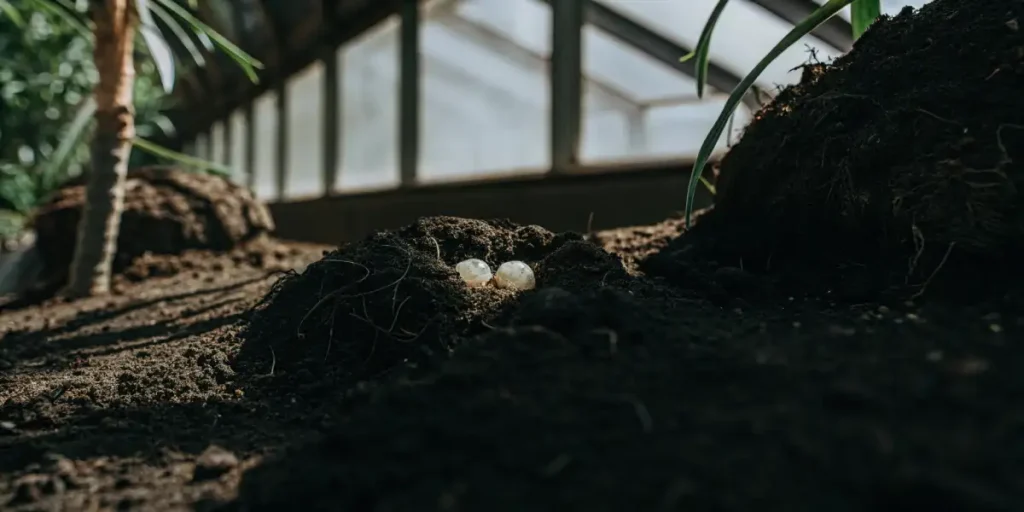
FAQs
What are the signs of bug eggs on cannabis roots?
The presence of small, white clusters on the roots is a clear indicator. These clusters can be mistaken for soil particles. However, they are usually tightly packed and distinct in appearance.
Other signs include wilting or yellowing leaves. These symptoms suggest that the roots are struggling to absorb nutrients. If untreated, it can lead to further complications like root rot.
In some cases, a foul odor emanating from the soil can indicate the presence of decaying organic matter, often caused by larvae feeding on the roots. This is a serious sign of infestation.
Additionally, if the plant seems to be underperforming despite optimal care, it may be wise to inspect the roots for any hidden bug eggs. Early detection is crucial for effective management.
How can I prevent insect eggs on my cannabis roots?
Regular inspection is vital. Checking the roots weekly can help catch problems early. This proactive approach prevents serious infestations.
Maintaining a clean growing environment is essential. Ensure tools and containers are sanitized. This minimizes the risk of transferring eggs between plants.
Another preventive measure is to ensure that your growing medium is well-aerated. Compacted soil can create an ideal environment for pests. Regularly tilling the soil can disrupt potential breeding grounds.
Moreover, encouraging natural predators such as ladybugs in your garden can help control pest populations. They consume many harmful insects, providing a natural barrier against bugs egg on cannabis roots.
Are there organic solutions for bugs on cannabis roots?
Yes, several organic solutions are available. Neem oil is a popular choice. It works by disrupting the life cycle of insects, preventing them from maturing.
Diatomaceous earth is another effective option. It dehydrates and kills insects on contact. Sprinkling it around the roots creates a protective barrier.
Introducing predatory insects like parasitic wasps can naturally reduce pest populations. These wasps specifically target pest eggs, helping to control the problem at the source.
Additionally, using a mix of essential oils such as lemon and eucalyptus can enhance the plant’s natural defenses. These oils can be applied to the soil to deter pest activity organically.
Can certain cannabis strains resist bugs better?
Some strains are naturally more resilient. For example, Critical Daddy Purple offers robustness against minor pest infestations. Its genetic makeup helps it withstand challenging conditions.
Similarly, strains like Gelato and Purple Punch thrive in organic setups. They are well-suited for environments where pest control is crucial.
Breeding programs often focus on enhancing pest resistance. Strains developed with this trait can offer growers a competitive edge in maintaining healthy plants.
The use of resilient strains is part of an integrated pest management strategy. While no strain is entirely immune, choosing those with a higher resistance can reduce the impact of bugs egg on cannabis roots.
What are natural ways to eliminate bug eggs on cannabis roots?
Neem oil and diatomaceous earth are effective natural remedies. They target the eggs without harming the plant. These methods are safe and environmentally friendly.
Companion planting also works well. Growing plants like marigolds nearby can deter pests. This approach helps maintain a healthy growing environment.
Incorporating beneficial fungi such as mycorrhizae into your soil can strengthen plant defenses. These fungi improve nutrient uptake and bolster root health, making them less susceptible to pest infestations.
Furthermore, creating a habitat for beneficial insects can naturally curb pest populations. By fostering biodiversity in your garden, you can create a self-regulating ecosystem that helps control harmful pests.


